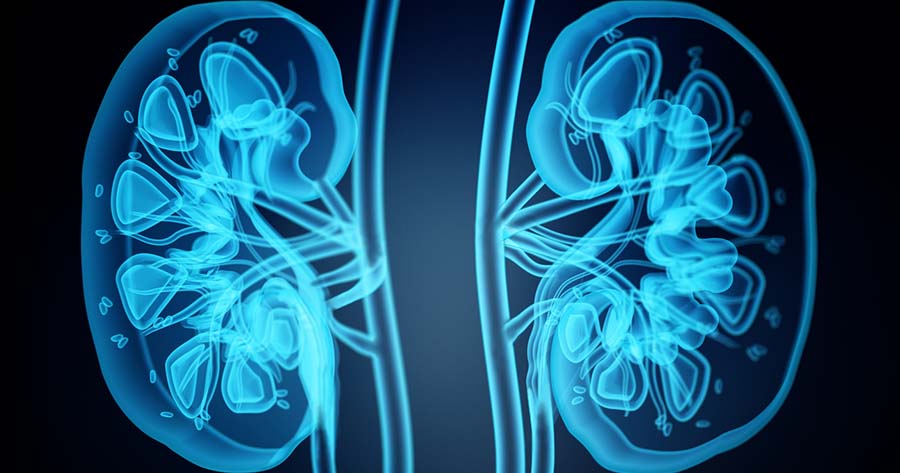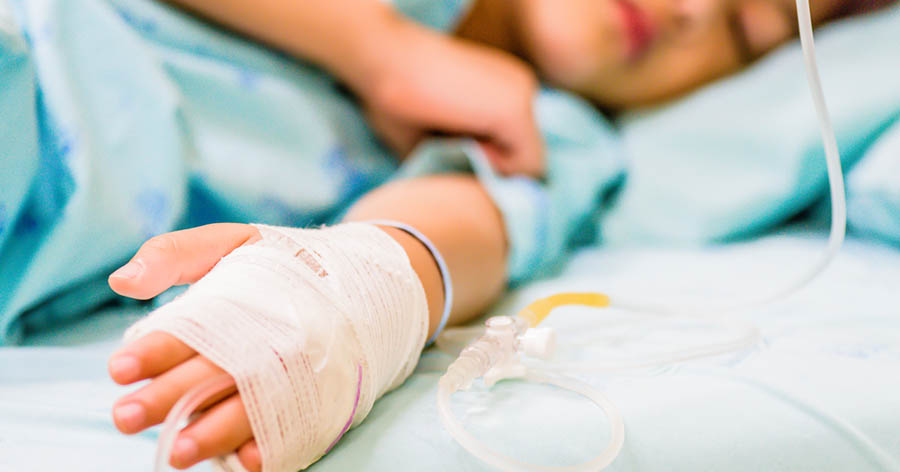Children and young people are nowadays given the opportunity to go on more and more exotic school trips, including adventure trips and volunteer expeditions.
This article describes the planning and guidance given to a 16-year-old young woman, Georgia, with type 1 diabetes and coeliac disease to enable her to participate in a month-long trip to Tanzania. This trip was arranged by her school and was organised by Camp International.
The first part of the trip involved living in remote conditions and manual community work, including renovation of buildings. The second part of the trip was to complete a scuba diving certificate. Partnership working with the girl and her family, her school, the travel company and her diabetes team enabled her to participate safely.
Initial planning
Initial planning started six months before the trip. The first meeting enabled Georgia and her mother to discuss the outlines of the trip and what preparation would be required. Initially, the trip was to Kenya but 3 weeks from departure, due to the political situation, this was changed. This change increased transfer times between camps to up to 6 hours. As medical help would be more than 2 hours drive away over difficult terrain, it was agreed that the accompanying teacher would learn how to administer a glucogen injection in the event of severe hypoglycaemia and a detailed written care plan and instruction was to be provided nearer the trip. Georgia’s mother had declared Georgia’s medical conditions to Camp International and had ensured adequate health insurance was in place.
Vaccination and health promotion prior to travel
The UK has a comprehensive vaccination programme but it does not cover all conditions and those travelling abroad, especially to remote areas, should ensure that they have adequate protection prior to travel (National Travel Health Network and Centre [NaTHNaC], 2014). Some vaccines may need several doses to afford full protection so specialist advice should be sought as early as possible from a practice nurse and the local Travel Health Network vaccination clinic. A useful reference list for healthcare teams to see what vaccinations are required in each country is published by MIMS. It provides country-specific guidance and is regularly updated (MIMS, 2014)
Any live vaccine can cause changes in blood glucose and it was important that Georgia knew to monitor blood glucose carefully and act on any resulting changes. She was also advised to avoid using the same limb for insulin injections for 1 month after the vaccine in case of lymphadenitis, which can affect absorption (Thornton, 2000). She was also given anti-malarial advice and treatment, which was started before the trip and continued on return (Public Health England, 2014).
During this initial meeting, illness avoidance was discussed and a list of over-the-counter medication that should be taken on the trip was drawn up (Box 1). Hand hygiene was discussed, including the importance of using antibacterial hand gel before eating in order to prevent illness. Georgia was fully aware that the use of alcohol gel could affect blood glucose results and would use clean water for hand washing prior to blood testing.
She had already purchased her boots as the young people on the trip had been advised to get early to “break them in”. Foot care advice was provided, including nail cutting and daily inspection for blisters and cuts. As they had been advised they would probably spend a great deal of time in their boots, it was also suggested to take topical anti-fungal powder and cream to be used in hot and humid conditions. Safe sun advice was provided and guidance on treating cuts, bites and stomach upset. Diabetes specific “sick day rules” were revised at this time and again when meeting with Georgia’s teacher. A full written care plan was produced for the trip.
Diving
The family were unsure initially if Georgia would be allowed to dive but wanted her to participate fully in the trip. Investigation via the internet found specific advice from Diving Diseases Research Centre (DDRC) Healthcare who specialise in diving and hyperbaric medicine. They advised there was no reason why people with good diabetes control should not dive as long as they had no complications and good awareness of hypoglycaemia (DDRC Healthcare, 2014). Box 2 lists some important questions that the healthcare professional should ask before declaring a person with diabetes fit to dive.
A plan was made that Georgia would learn how to take glucose gel underwater if required, always test her blood before diving and take an additional snack before diving, dependent on this result. Her diving buddy was to be made aware of her needs, including an agreed signal if she needed to stop to treat a hypoglycaemic episode before safe ascent. Her hospital consultant agreed to sign the fitness to dive form but, despite this, there was initial reluctance from the organisers to allow her to participate. After several communications with family they agreed to assess Georgia during the initial “pool” part of the PADI diving training and the instructors would be asked to consider reasonable adjustment. They had to take into account health and safety, and Georgia’s competence before making the final decision if she could “open water” dive.
Travel arrangements
The travel to the destination involved a combination of road and air travel. Arrangements were made to ensure that gluten-free food and snacks were available on flights and meal stops along the way. A hospital letter was provided to allow the carriage of insulin, diabetes equipment and hypoglycaemia treatment through customs. It also requested that the cooling gel packs be allowed on the plane in order to keep insulin supplies cool during the journey.
Diet
Due to her coeliac disease, Georgia is on a strict gluten-free diet. She is very sensitive to gluten and any cross contamination can cause her symptoms. The camp organisers assured her family that this would be possible as the majority of foods were freshly prepared and based on corn and rice, rather than wheat-based products. Furthermore, the chefs at the camp were allergy trained.
Extra baggage allowance was arranged to enable pasta and snack foods to be taken from the UK. As Georgia was proficient at carbohydrate counting, there were no concerns surrounding this, although, it was written into her care plan that she may request to see food labels.
It was advised that she had three meals per day and a supper. She did not routinely snack between meals, but she was also advised to take snack food into her sleeping accommodation at night in a sealed container so it would not attract unwanted insects. She was also advised to drink plenty of sugar-free fluids.
Insulin supplies and diabetes equipment
Insulin should be stored between 2 and 8˚C, although insulin in current use can be kept at room temperature in the UK (<25˚C) for a maximum of 28 days after initial use and within its expiry date. Manufacturers’ guidance must always be adhered to. During the trip, insulin could potentially be exposed to extreme temperatures, which could denature the insulin and make it ineffective (Diabetes UK, 2014). Water-activated cooling pouches were purchased in addition to the transport pack that had cooling gel packs. This enabled supplies to be kept cool. Disposable pens were utilised to minimise breakage and to prevent mechanical failure due to grit. Insulin usage was calculated from total daily doses at home and an adequate supply of devices was taken to cover the whole of the trip plus a few days extra to allow for breakages or delays.
Although it was not necessary for this particular journey, it is important to check if insulin is available locally at the destination and if it has the same name as in the UK. This information will be very important if medical assistance or further supplies of insulin are needed.
As Georgia uses a bolus calculator blood glucose meter, she took a spare meter, batteries and large supply of strips as she anticipated extra testing whilst away. She also took a ketone monitor to enable accurate blood ketone monitoring should she become unwell. She took both glucogen kit and glucose gels. Her preferred hypoglycaemic treatment was glucose tablets, but she was also advised to buy a full-sugar fizzy drink locally for the same purpose.
She had a dry bag in which she could carry all her supplies to each activity. Camp International provided sharps disposal on site.
A checklist for insulin and monitoring equipment is shown in Box 3.
Exercise levels and heat
As exercise and heat can lower blood glucose, specific advice was given surrounding this. As the trip was for a month, specific advice was given about titration of basal insulin. She was advised that her basal dose should be reduced by 10% on the first night, then titrated to get a fasting blood glucose of 5.5 mmol/L with no night hypoglycaemia. The specific advice is shown in Box 4 (overleaf).
Illness prevention and management
All preventative measures were taken to prevent illness. Vaccinations and anti-malaria medication were taken prior to the trip and precautions, such as a mosquito net, were used on the trip.
Both Georgia and her teacher were advised that if Georgia should become unwell it was very important to test her blood glucose and test for ketones more frequently and correct blood glucose accordingly with extra insulin. It was agreed in the initial meeting that if her ketones became greater than 1 mmol/L then she would contact home for further advice and reassurance. They were also advised that if ketone levels were over 3 mmol/L then immediate hospital assistance should be sought. Similarly, she was advised to seek urgent care if she experienced vomiting for more than 6 hours, due to the risks of dehydration.
Finally, Georgia was also advised that all insect bites should be treated appropriately and observed for signs of infection. Feet should also be inspected daily for cuts and sores.
Outcome
As part of the volunteering, Georgia was to take part in house renovation and plastering. This involved heavy work, such as building mud walls and digging trenches for foundations in the local villages. She managed both her diabetes and coeliac disease well, enabling full participation in the trip.
Georgia’s biggest success was taking part in the PADI diving training and passing her open-water diving certificate. Reflecting after the trip, her mother reports she has gained in confidence and is now more independent. Furthermore, Georgia is pleased to report that she has developed excellent planning skills and has enjoyed helping those less fortunate. She has made some new friends and enjoyed the team work. She enjoyed the trip immensely, saying:
“The trip has taught me that my diabetes shouldn’t stop me doing anything.”
Conclusion
With careful advanced planning, young people with diabetes and other long-term conditions can be empowered to fully participate in these exciting and challenging school trips. This is only achievable with good communication with all those involved, including teachers and healthcare professionals. Of course, it is essential that the young person is at the centre of all planning and they should receive the best possible support and encouragement to make it an enjoyable and rewarding trip.





NHS England to allow weight-loss injections for prioritised patient cohorts from late June.
5 Apr 2025